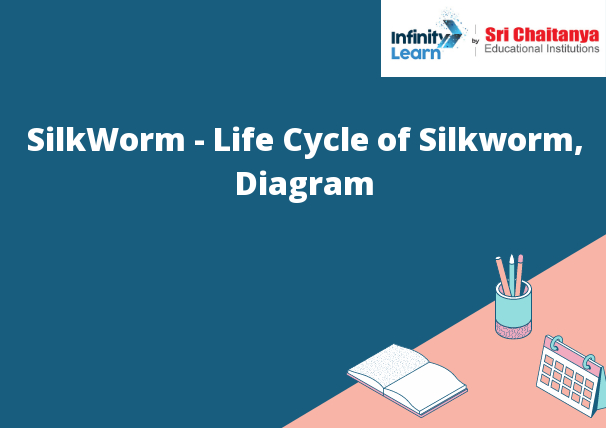Silkworms
SilkWorm – Life Cycle of Silkworm: The silkworm is the larva of a moth, Bombyx mori, which feeds on mulberry leaves. The cocoon is made of a single thread of raw silk, about 1,000 meters long. The silk is made up of two proteins, fibroin and sericin. Fibroin is the structural protein, and sericin is the sticky protein that holds the fibroin together. Silkworms are used to produce silk, the strongest natural fiber known. Silkworms are kept in captivity and fed mulberry leaves until they spin cocoons. The cocoons are then boiled to kill the worms and the silk is extracted.

Life Cycle of Silkworm
Silkworms are the larval form of the domesticated silk moth, Bombyx mori. The life cycle of a silkworm is about 28 days.
- The eggs are tiny, about 1/25 of an inch long, and are laid singly or in small clusters on the surface of specially prepared mulberry leaves.
- The eggs hatch in about 10 days, and the tiny larvae begin to feed. They grow rapidly, shedding their skins four times before they are ready to spin a cocoon.
- The cocoons are made of a single thread of silk, about 1,000 feet long. The larvae spin the cocoons by moving their heads from side to side as they secrete the silk.
- The cocoons are allowed to dry for a few days, after which they are boiled to kill the larvae. The silk is then extracted from the cocoons.
The life cycle of the silkworm is very interesting. The eggs are hatched by the warmth of the sun or a fire. The tiny worm-like larvae feed on mulberry leaves. As they grow, they spin a silken cocoon around themselves. The pupae inside the cocoon transform into beautiful, white moths. The moths lay eggs, and the life cycle begins anew.
Silkworms are the larval form of a moth that is used for the production of silk. The life cycle of a silkworm takes about a month to complete. Silkworms are hatched from eggs that are laid by a female moth. The eggs are small, white, and round. They are laid in clusters and can have as many as 500 eggs in a single cluster.
The eggs hatch into small, white caterpillars that are known as silkworms. Silkworms feed on mulberry leaves and grow very quickly. They will molt (shed their skin) several times as they grow. By the time they are ready to pupate (form a cocoon), they will be about 2 inches long.
Silkworms form a cocoon by spinning a web of silk around themselves. They will remain in the cocoon for about two weeks while they transform into adult moths. The adult moths will then break free of the cocoon and will mate. The female moth will then lay eggs, which will start the cycle over again.




